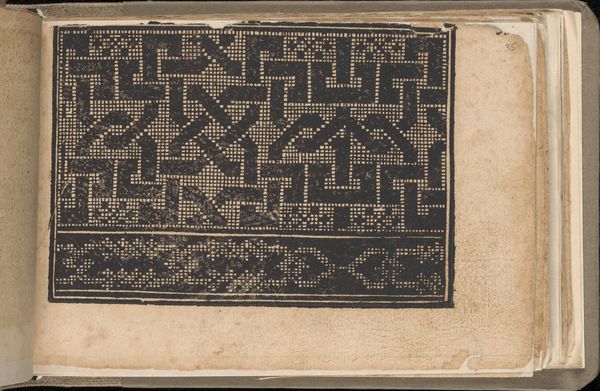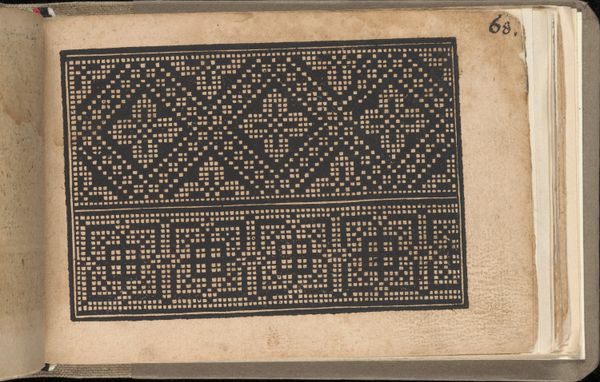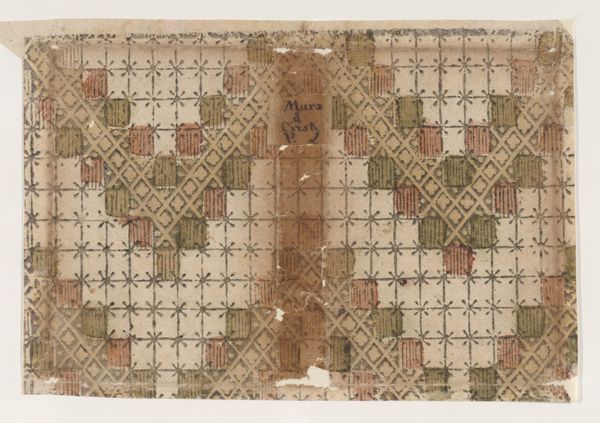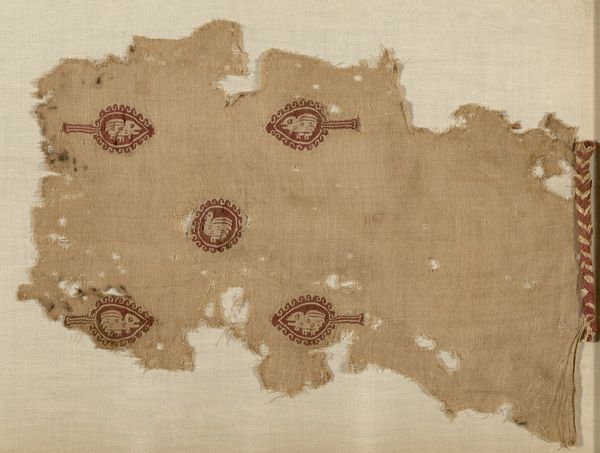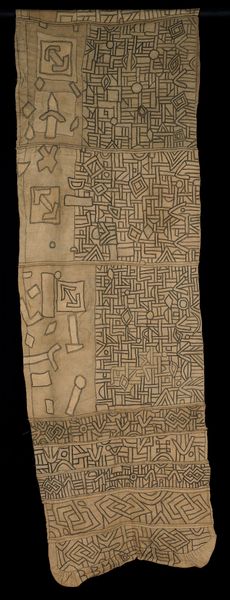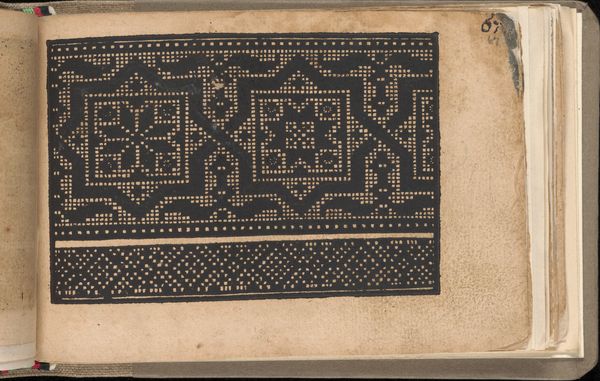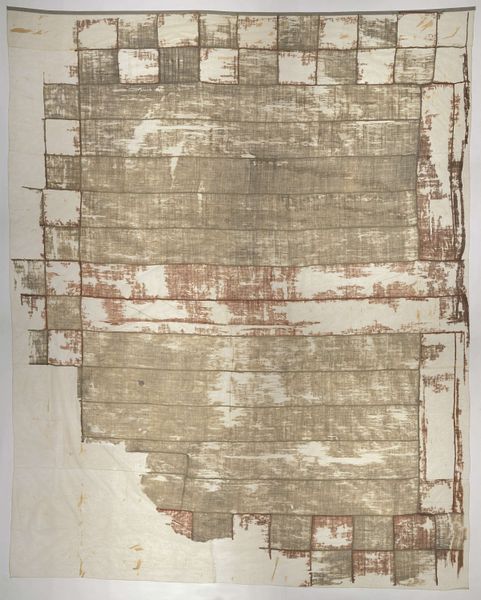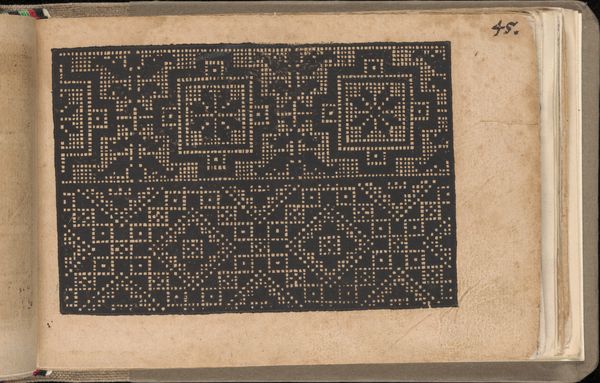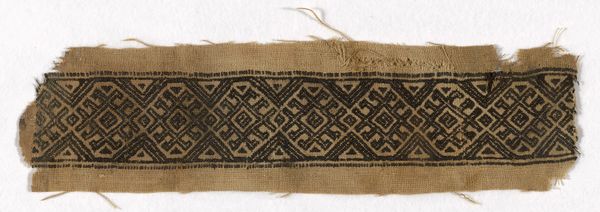
fibre-art, weaving, textile
#
fibre-art
#
sculpture
#
weaving
#
textile
#
geometric
#
indigenous-americas
Dimensions: 43.2 × 15.2 cm (17 × 6 in.)
Copyright: Public Domain
Curator: Looking at this fiber art, "Fragment," an Inca weaving potentially dating between 1476 and 1532, the word that first comes to mind is "enduring." Despite its worn state, there’s something undeniably powerful in its preserved geometry. Editor: Yes, it’s materially intriguing. The raveled edges speak volumes about time and use. You can almost feel the history woven into these simple, repeated patterns. What sort of function did this fragment once serve, I wonder? Curator: Inca textiles weren’t mere decoration. The motifs were a visual language, a means to record history, social structures, and religious beliefs. The repeated geometric shapes—triangles filled with concentric rectangles—are symbolic. Triangles could reference the three levels of existence and those nested rectangles might stand for kinship. Editor: Interesting, considering how standardized those patterns seem to be. And I'm drawn to the material evidence itself. This kind of weaving demanded skilled labor, resourcefulness in sourcing materials like cotton or perhaps alpaca wool, and significant investment of time. Who were the weavers and what was their social position within Inca society? Curator: Textile production was indeed often specialized, with chosen women, "aclla", often responsible for creating fine cloth for the Inca elite or for religious rituals. This very fragment speaks of their meticulous skills. The surviving patterns evoke social memory. They point to the enduring codes through which they organized social life. Editor: Right. These weren’t simply functional objects, but commodities carrying profound symbolic and economic weight. The fact that only a fragment survives also makes me wonder about consumption and the lives of objects. Curator: Indeed. Its fragmented nature also evokes a certain mystery and allows viewers to project meanings and interpretations based on their own understanding of the world. In this case, one has to focus on symbols to access cultural memory. Editor: Looking at it through a material lens enriches this experience as it compels us to reflect on the making process. It's more than just abstract shapes. The work of crafting is deeply meaningful. Curator: I agree; it beautifully weaves together the physical, symbolic, and social spheres. It’s a testament to human creativity, cultural memory, and material endurance. Editor: Precisely. This "Fragment" invites us to unravel layers of history and imagine not only how the weaving came to be, but also the journey of how it came to us, the processes through which value accrues and persists.
Comments
No comments
Be the first to comment and join the conversation on the ultimate creative platform.


